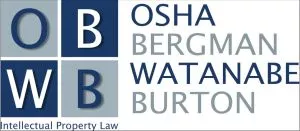Almost a decade after its Lelo1 decision, the Court of Appeals for the Federal Circuit ("Federal Circuit") clarified the domestic industry requirement of 19 U.S.C. § 1337 ("Section 337"), in favor of U.S. businesses against foreign infringers. In two recent decisions, the court explained that "small market segments can still be significant"2 and expenditures related to enterprise functions, like sales and marketing, are relevant to establish the existence of an industry, even in the absence of manufacturing practice.3
Section 337 of the Tariff Act of 1930 prohibits unfair practices in import trade. It authorizes the United States International Trade Commission ("ITC"), a federal agency, to exclude from entry into the United States goods that violate fair importation practices, including infringement of U.S. patents. The ITC's fast track procedures and potent exclusion remedies increased its role as a vital enforcement venue in recent years.
Not to exceed its purpose in protecting domestic industries, section 337 preconditions the ITC's exclusion of infringing goods on the satisfaction of a domestic-industry requirement. As such, section 337 "appl[ies] only if an industry in the United States, relating to the articles protected by the patent, . . . exists or is in the process of being established." This has been interpreted by courts as a requirement of two prongs: economic and technical.
The economic prong requires the existence of an "industry" as defined by section 337(a)(3). An industry "shall be considered to exist" upon a showing of:
(A) significant investment in plant and equipment;
(B) significant employment of labor or capital; or
(C) substantial investment in its exploitation, including engineering, research and development, or licensing,
in relation to the patented articles. The technical prong requires establishing that the existing industry relates to the patented articles.
In Lelo, the Federal Circuit established that the analysis of the economic prong under Section 337(a)(3) must be "quantitatively based." In holding so, the court denied relief to a Canadian retailer and patentee alleging Section 337 violation when the retailer's only domestic activities were purchasing off-the-shelf "critical" components for its own devices made according to its infringed patent from American suppliers. The court explained that "'significant' and 'substantial' in Section 337(a)(3) refer to an increase in quantity, or to a benchmark in numbers," and, where domestic investments are quantitatively "insignificant," qualitative factors, like the criticality of the components purchased domestically, cannot compensate to satisfy the economic prong.
Left unclear in Lelo were the factors under which the ITC may quantitively assess evidence of the economic prong. In Healthgen, the Federal Circuit considered some of these factors in addressing whether small market segments can still be significant for purposes of the economic prong. There, a U.S. patent owner sought Section 337 exclusion of infringing products imported by a Chinese supplier. The supplier alleged that the patent owner failed to satisfy the economic prong because its "investments are too small to be significant or substantial under Section 337(a)(3)." The court disagreed, siding with the ITC and the patentee, and held that "[a] finding of domestic industry cannot hinge on a threshold dollar value or require a rigid formula." Despite the low expenditure, the court affirmed the ITC's quantitative assessment of the economic prong upon finding "all of the investments [were] domestic, all market activities occur[red] within the United States, and the high investment-to-revenue ratios indicated this [was] a valuable market."
In Lashify, the Federal Circuit further clarified what expenditure may count for purposes of the economic prong. Lashify, a U.S. distributor selling items manufactured abroad, was denied Section 337 relief after the ITC found it failed the economic prong. In reaching its determination, the ITC erroneously determined that large expenditures are insufficient when the labor or capital is used for warehousing, quality control, and distribution, if the products "are manufactured outside the United States and no additional steps occur in the United States to make them saleable." The Federal Circuit disagreed, finding the ITC's statutory interpretation contrary to the clear text of Section 337 and lacking support in its legislative history. The court held that expenditures related to enterprise functions, like sales and marketing, are in fact relevant to establishing the existence of an industry, even in the absence of manufacturing practice.
The court acknowledged that holding otherwise would effectively require "that the complainant engage in domestic manufacturing activity in order" to qualify as labor and capital under Section 337(a)(3)(B)—a limitation that is absent in the statute. Citing Healthgen, the Federal Circuit remanded the case back to the ITC to consider Lashify's employment of labor and capital even though used in sales, marketing, warehousing, quality control, or distribution, and to make a factual finding of whether those qualifying expenses are significant or substantial based on "a holistic review of all relevant considerations."
These two recent decisions effectively expand the economic prong of the domestic industry requirement, making the ITC an even more attractive venue for U.S. patent-owning businesses against foreign infringers exporting their infringing products to the United States. First, patent owners with a small market segment in the U.S. have a stronger chance than ever at winning at the ITC upon a showing of a valuable market in the U.S., under Healthgen. Second, under Lashify, U.S. patent owners that import products from abroad have now a broader scope of activities and investments to rely on in seeking Section 337 relief at the ITC, including sales and marketing, warehousing, quality control, or distribution, as opposed to being restricted to reliance on research and development, engineering, or even manufacturing, so long as those expenses are significant or substantial based on "a holistic review of all relevant considerations."
Footnotes
1. Lelo Inc. v. Int'l Trade Comm'n, 786 F.3d 879 (Fed. Cir. 2015).
2. Wuhan Healthgen Biotechnology Corp. v. Int'l Trade Comm'n, 127 F.4th 1334, 1339 (Fed. Cir. 2025).
3. Lashify, Inc. v. Int'l Trade Comm'n, No. 2023-1245, 2025 WL 699368, at *12 (Fed. Cir. Mar. 5, 2025).
The content of this article is intended to provide a general guide to the subject matter. Specialist advice should be sought about your specific circumstances.



